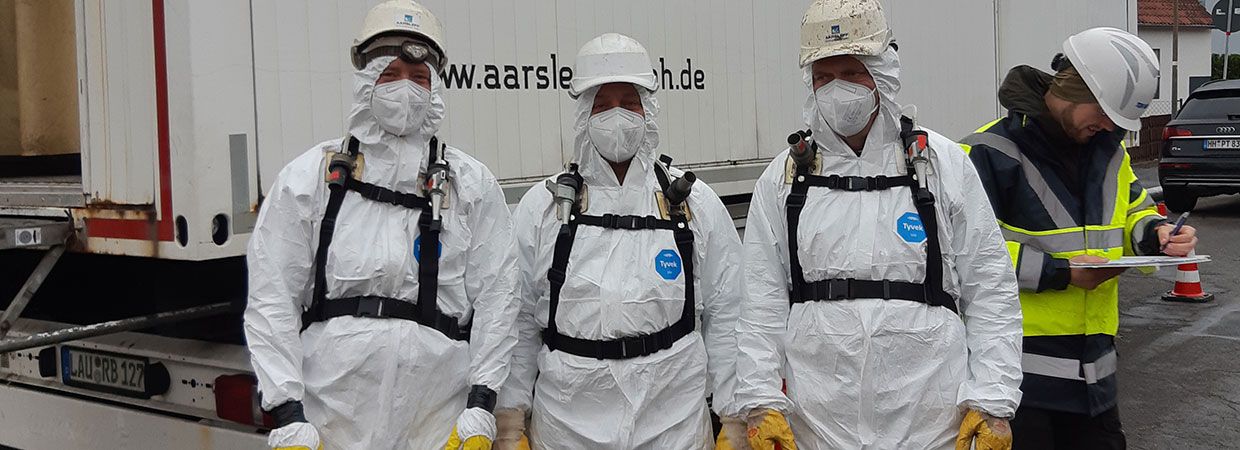english – AC pipe application: decision still pending
The application for recognition as a low-emission procedure according to TRGS 519 is not yet "through". A decision is expected in the coming week.
Municipalities and network operators are waiting with flexural stress for the decision of the Institute for the Protection of Labour (IFA) on the recognition of cured-in-place pipe lining as a low-emission procedure in asbestos cement pipes according to the Technical Rule on Hazardous Substances (TRGS) 519. But there is no green light yet.
"The meeting of the decisive working group at the IFA took place in June and the documents have been accepted so far. However, they still want to wait for a statement from another committee, which is scheduled to meet in the 28th calendar week," reports RSV Managing Director Reinhild Haacker. This decision has nothing to do with the contents of the RSV application. However, from the point of view of the IFA working group, it is obviously necessary in order to ensure legality in terms of the Hazardous Substances Ordinance and the European REACH Regulation.
Why recognition as a low-emission procedure is important
The decision affects thousands of kilometres of asbestos cement pipes buried underground in Germany. The health risk of asbestos is proven to be high when it is worked on the surface and gets into the air we breathe. In order to carry out maintenance work on products containing asbestos, strict precautions must be taken in accordance with TRGS 519 and, for example, accompanying measurements must be carried out.
Recognised low-emission procedures provide relief here because they have already demonstrated the low exposure of fibres in construction site measurements. A procedure manual ensures clarity in terms of safety precautions and correct procedure implementation. For drains; sewers, the list of low-emission procedures so far only includes the bursting procedure,
High pressure for municipalities and grid operators
The German state of Bavaria had last announced in April that it would once again allow inliner procedures as a solution for maintenance, after no permits for measures had been issued for more than two years. Among the reasons given by the Ministry of the Environment for the ban was the lack of low-emission procedures. "We have taken care of this - mainly due to pressure from the municipalities. We have proven through measurements that pipe lining is suitable as a low-emission procedure according to TRGS 519 and can thus be put out to tender with legal certainty," says Haacker.
In the meantime, the office has received an increasing number of calls and e-mails from network operators or engineering firms working on tenders on behalf of municipalities - and not only from Bavaria. Haacker: "Network operators are faced with a dilemma: they have to fulfil their obligations under the Water Resources Act. In fact, however, they are currently being prevented from doing so. Because they fear that maintenance work could make them liable to prosecution, some are now even foregoing the cleaning and inspection of their pipes. A very worrying development.
Bavaria overturns controversial legal opinion on useful life
Why the topic is being discussed in Germany has to do with an interim ban on sewer rehabilitation measures in the Free State of Bavaria. The State Ministry for the Environment and Consumer Protection had justified this on the grounds that trenchless sewer rehabilitation procedures allegedly violate the European REACH Regulation. This prohibits such an extension of the useful life of products. This legal opinion had always been challenged by experts and municipal representatives and has now been withdrawn by the state of Bavaria.
According to the current announcement from Munich, pipes laid underground do not have to be disposed of if they still fulfil their function as pipes. Thus, trenchless procedures are also applicable in terms of the Ordinance on Hazardous Substances. "The fact that there is no longer direct contact with the medium to be transported (wastewater/water) does not mean that the useful life of the AC pipe is to be regarded as expired," the ministry's statement says verbatim. However, this does not apply to procedures with large-scale bonding, as the subsequent removal of asbestos pipes must be possible.
International developments - Australia as a role model
The reason for the need for low-emission procedures for drains; sewers in Germany is also due to the fact that there is currently no safe disposal option for asbestos worldwide. Landfills are considered an "impractical solution" according to an EU assessment. The limited landfill capacities in Germany pose additional major challenges for municipalities, especially since the pipes usually end up in landfills where they came from: Underground. Furthermore, the crushing of waste containing asbestos is not permitted.
The handling of asbestos in units is a global issue, although neither the REACH regulation nor the Ordinance on Hazardous Substances specify whether we are talking about buried units or asbestos in engineering, surfaces. [As far as I know, Australia is the only country in the world that has a national guideline for the handling of asbestos cement pipes. And here, trenchless procedures are listed as an alternative to disposal," says Reinhild Haacker.
In the country, more than 40,000 kilometres of asbestos cement pipes have been braced in water and drainage systems. The Asbestos Safety and Eradication Agency issued guidelines in 2021 on how to deal with pipes. In order to keep the risks as low as possible, a systematic way of dealing with them is outlined. In addition to removal and replacement, "by-passing" is recommended (parallel construction of a new pipe, leaving the existing pipeline in the soil. If these methods cannot be considered, cured-in-place pipe lining on site or lining with retracted hoses is recommended. Other procedures should also be able to be considered.
